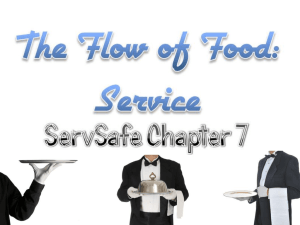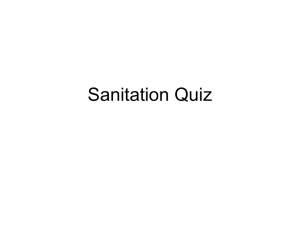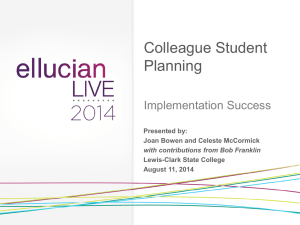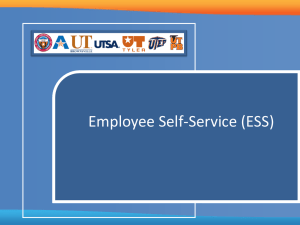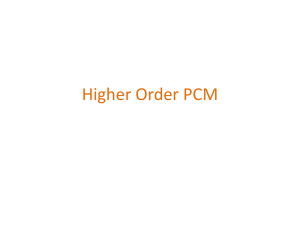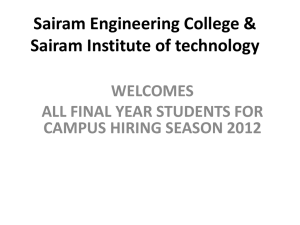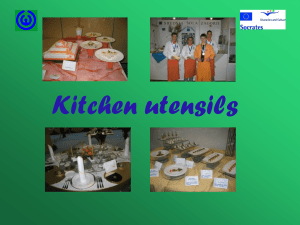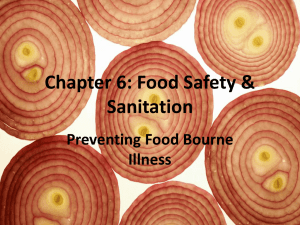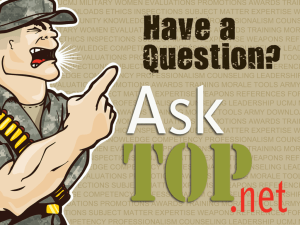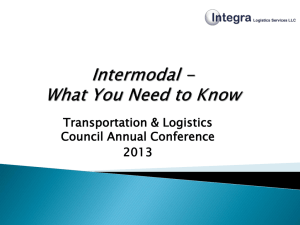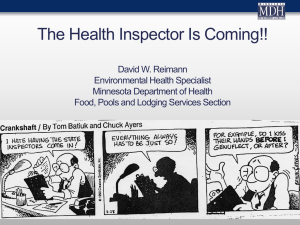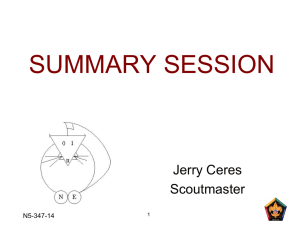File
advertisement
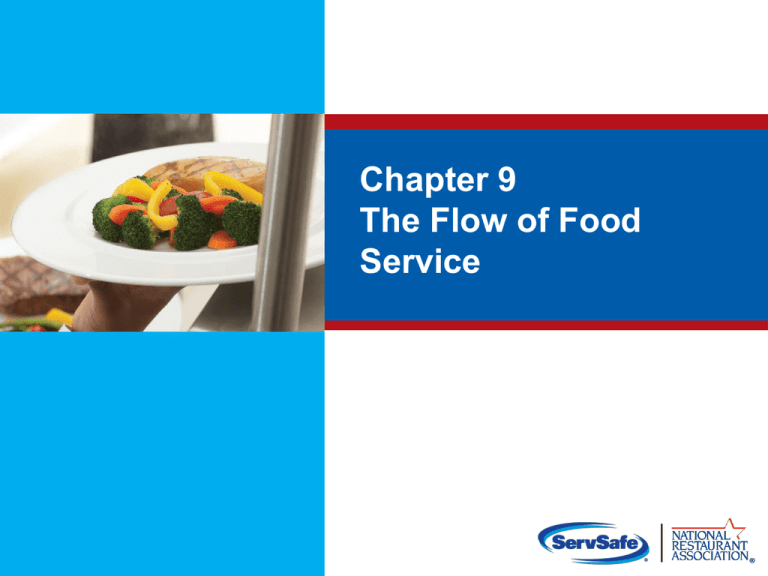
Chapter 9 The Flow of Food Service Service Objectives: ● Holding hot food ● Holding cold food ● Using time as a method of control for food ● Preventing contamination in self-service areas and when serving food to customers 7-2 Guidelines for Holding Food Temperature: 7-4 Hold TCS food at the correct temperature o Hot food: 135°F(57°C) or higher o Cold food: 41°F(5°C) or lower Check temperatures at least every four hours o Throw out food not at 41°F (5°C) or lower o Check temperatures every two hours to leave time for corrective action Guidelines for Holding Food Temperature: NEVER use hot-holding equipment to reheat food unless it’s designed for it o 7-5 Reheat food correctly, and then move it into a holding unit Guidelines for Holding Food Thermometer • Use a thermometer to check temperatures • Never use the temperature gauge on a holding unit to do it Guidelines for Holding Food Time • Check food temperature at least every 4 hours • Throw out food that is not being held at the correct temperature • You can check every 2 hours and take corrective action this will leave time for corrective action Guidelines for Holding Food Reheating food • Never use hot-holding equipment to reheat food unless it is built to do so • Reheat food correctly before putting it in hot-hold equipment Guidelines for Holding Food Policies • Create policies about how long the operation will hold food and when it will throw it out Guidelines for Holding Food Food covers and sneeze guards: Cover food and install sneeze guards to protect food from contaminants o 7-3 Covers protect food from contamination and help maintain food temperatures Holding Food Without Temperature Control Cold food can be held without temperature control for up to six hours if: It was held at 41°F (5°C) or lower before removing it from refrigeration It does not exceed 70°F (21°C) during service o It has a label specifying: o o 7-6 Throw out food that exceeds this temperature Time it was removed from refrigeration Time it must be thrown out It is sold, served, or thrown out within six hours Holding Food Without Temperature Control Hot food can be held without temperature control for up to four hours if: 7-7 It was held at 135°F (57°C) or higher before removing it from temperature control It has a label specifying when the item must be thrown out It is sold, served, or thrown out within four hours Service Staff Guidelines for Serving Food Handling dishes and glassware: Correct Incorrect 7-10 Service Staff Guidelines • Hold dishes by the bottom or edge • Hold glasses by the middle, bottom, or stem • Do not touch the food-contact areas of dishes or glassware • Carry glasses in a rack or on a tray to avoid touching the food-contact service • Do not stack glasses when carrying them Service Staff Guidelines • Hold • Do flatware by the handle not hold flatware so that servers grasp food- contact surfaces • Avoid • Use bare-hand contact with food that is ready to eat ice scoops or tongs to get ice • Never break. scoop ice with your bare hands or a glass. A glass may chip or Kitchen Staff Guidelines Prevent contamination when serving food: Wear single-use gloves whenever handling ready-to-eat food o 7-8 As and alternative use spatulas, tongs, deli sheets, or other utensils Use clean and sanitized utensils for serving o Use separate utensils for each food o Clean and sanitize utensils after each task o At minimum, clean and sanitize them at least once every four hours Kitchen Staff Guidelines for Serving Food Prevent contamination when serving food: 7-9 Store serving utensils correctly between uses o On a clean and sanitized food-contact surface o In the food with the handle extended above the container rim Preset Tableware If you preset tableware: Prevent it from being contaminated o Wrap or cover the items Table settings do not need to be wrapped or covered if extra settings: 7-13 Are removed when guests are seated Are cleaned and sanitized after guests have left Re-serving Food NEVER re-serve: Food returned by one customer to another customer Uncovered condiments Uneaten bread Plate garnishes Generally, only unopened, prepackaged food in good condition can be re-served: 7-14 Condiment packets Wrapped crackers or breadsticks Self-Service Areas Prevent time-temperature abuse and contamination: 7-15 Use sneeze guards o Must be located 14" (36cm) above the counter o Must extend 7" (18cm) beyond the food Identify all food items o Label food o Place salad dressing names on ladle handles Self-Service Areas Prevent time-temperature abuse and contamination: 7-16 Keep hot food at 135°F (57°C) or higher Keep cold food at 41°F (5°C) or lower Keep raw meat, fish, and poultry separate from ready-to-eat food Do NOT let customers refill dirty plates or use dirty utensils at self-service areas Self-Service Areas Prevent time-temperature abuse and contamination: 7-17 Stock food displays with the correct utensils for dispensing food Do NOT use ice as an ingredient if it was used to keep food or beverages cold Refilling Returnable Take-Home Containers Some jurisdictions allow food handlers to refill take-home containers brought back by a customer with food and beverages. Take-home containers can be refilled if they meet the following conditions. • They were designed to be reused. • They were provided to the customer by the operation. • They were cleaned and sanitized correctly. Refilling Returnable Take-Home Containers Take-home beverage containers can also be refilled as long as the beverage is not a TCS food and the container will be refilled for the same customer. The container must also meet the following conditions. • It can be effectively cleaned at home and in the operation. • It will be rinsed before refilling with fresh, hot water under pressure. • It will be refilled by staff in the operation or by the customer using a process that prevents contamination. Labeling Bulk Food in Self-Service Areas When labeling bulk food in self-service areas: Make sure the label is in plain view of the customer Include the manufacturer or processor label provided with the food o 7-18 As an alternative, provide the information using a card, sign, or other labeling method Labeling Bulk Food in Self-Service Areas A label is not needed for bulk unpackaged food, such as bakery products, if: 7-19 The product makes no claim regarding health or nutrient content No laws requiring labeling exist The food is manufactured or prepared on the premises The food is manufactured or prepared at another regulated food operation or processing plant owned by the same person Off-Site Service When delivering food off-site: 7-20 Use insulated, food-grade containers designed to stop food from mixing, leaking, or spilling Clean the inside of delivery vehicles regularly Check internal food temperatures Label food with a use-by date and time, and reheating and service instructions Off-Site Service When delivering food off-site: 7-21 Make sure the service site has the correct utilities o Safe water for cooking, dishwashing, and handwashing o Garbage containers stored away from food-prep, storage, and serving areas Store raw meat, poultry, and seafood, and ready-to-eat items separately Catering Follow these guidelines to keep food safe: • Make sure the site has correct utilities, safe water for handwashing • Appropriate garbage containers • Use insulated containers for TCS food • Serve and hold cold food at appropriate temperatures • Store ready-to-eat food separately • Give instructions for how to handle leftovers Temporary Unit Guidelines • Units should be constructed to keep dirt and pests out. • Safe-handling rules should be applied • Safe drinking water needs to be available for cleaning, sanitizing, and handwashing. • It is best to use disposable, single use items Vending Machines To keep vended food safe: Check product shelf life daily o 7-22 Refrigerated food prepped on-site and not sold in seven days must be thrown out Keep TCS food at the correct temperature Dispense TCS food in its original container Wash and wrap fresh fruit with edible peels before putting it in the machine
